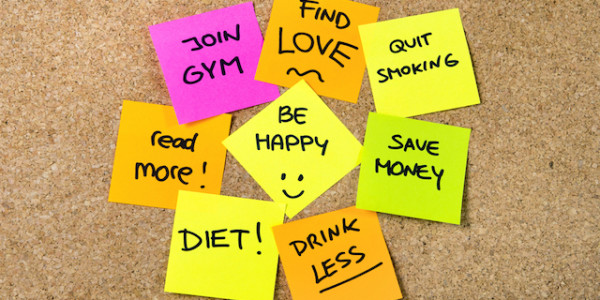I have talked many times on this site about how important developing habits are toward accomplishing your health and fitness goals. The reason habits are so crucial is because they become hard-wired within our brains as we repeat them. This makes them extremely easy to perform.
We don’t have to think, we just do. The problem with this is when poor habits control our lives. For example, when you are stressed or worried it may be easy to eat an entire bag of chips or cookies without much thought. Or you know it would be better to pack your lunch each day, but McDonalds is right across the street.
What if there was a simple way to reverse these trends and create new habits? And not just simple, ridiculously simple. Would that sound to good to be true?
The truth is it’s not. This strategy is know as implementation intention. This is a tactic used to create new habits based on current habits you already do throughout the day. It’s based on using “triggers” within your environment that let you know it’s time to perform a specific task.
Using the lunch example from above, let’s say the reason you don’t pack a lunch is because you want to sleep an extra 20 minutes before you get up for work. The simplest solution would be to pack lunch the night before.
You could say “When I get home from work, I’ll pack my lunch for tomorrow.” The trigger here is when you get home from work. It’s something you obviously do everyday, so now you will stack a new habit on top of it.
Research has shown that this is a very successful strategy. This is because most habits are based on willpower. The individual starts off with every intention of doing their new habit(s), but willpower just isn’t enough.
Influence by others, failing, and losing sight of the current goal can all hinder willpower’s affect. When this happens, it becomes almost impossible to achieve anything.
One research review looked at 94 independent tests conducted on implementation intentions (1). They discovered this strategy automated goal-directed responses and was effective at promoting goal striving. This essentially means it was found to be an great tactic to help the participants achieve their goals.
While this strategy of employing environmental triggers can be helpful, the biggest question is ‘How can you use it to create new habits or quit old habits?’
The first step is to identify the new habit you want to form or the old habit you want to break. Here are some examples:
- Get up early to go the gym before work
- Make a healthy breakfast each morning
- Quit eating dessert every night
- Go for a walk every day
- Stop eating out at restaurants every day
The list could go on and on. The important thing is to find one that you are struggling with, the one thing that has been hard for you do or break. Once you have found this, the second step is to create a “trigger” that will help you remember to perform the new habit or quit an old one.
If you have a problem with getting up early to go to the gym, you could say, “When my alarm goes off, I’ll get up and go to the gym.” If you struggle with eating dessert every night after dinner you could say, “When dinner is done, I’ll have a piece of fruit instead.”
The trigger you use can literally be anything. You must be specific in your plan though. Notice, in the gym example, I said “When my alarm goes off, I’ll get up and go to the gym” instead of “Tomorrow morning, I’ll get up and go to the gym”.
The trigger must be an actual trigger. It can’t be vague. That is why implementation intention can be successful. It helps you create real scenarios versus wishful plans.
So next time you want to decide to it’s time to break a habit or find a new one, use this ridiculously simple tactic. It may be the answer you have been looking for to create new healthy habits that stick.
References:
1. Gollwitzer, PM. Sheeran, P. Implementation intentions and goal achievement: a meta‐analysis of effects and processes. Adv Exp Soc Psychol. Volume 38, 2006, Pages 69–119.
Photo Credit:
1. http://tinybuddha.com/






